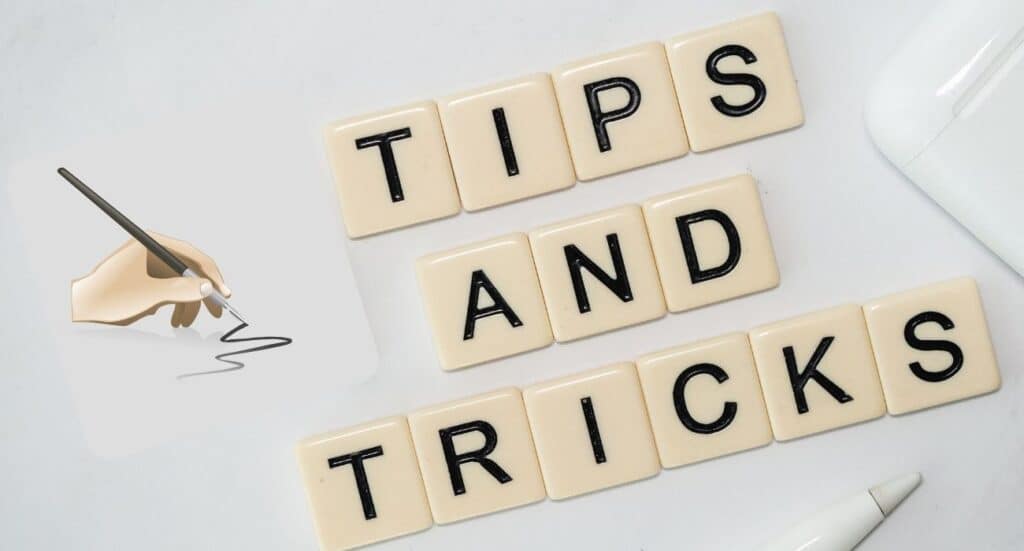Blog
Table of Contents
Write With Your Left Hand- Tips and Tricks

It can be extremely challenging when you write with your left hand especially when you are right-handed. It requires a significant amount of patience, determination, and practice to master the skill. Whether you want to improve your handwriting or learn a new skill, writing with your left hand can be a great way to challenge yourself and develop new neural pathways in your brain.
In this article, we’ll provide some helpful tips and tricks for writing with your left hand, even right-handed.
Part 1: Writing Practice
Understand the complexities of writing with your left hand:
When you write with your left hand, it is required of you to use the opposite side of your brain than you normally use for writing. This can be challenging, as it can feel like you’re starting from scratch. However, you can train your brain to adapt to the new task with practice.
Start slow:
When starting, it’s important to start slow and take your time. Don’t try to rush through the process, as this can lead to frustration and disappointment. Instead, take small steps and focus on improving one aspect of your writing at a time. Start by writing short words or phrases, and gradually work up to longer sentences and paragraphs.
Practice writing every letter:
One of the most effective ways to improve your left-handed writing skills is to practice writing every letter of the alphabet. This will help you get used to each letter’s different shapes and strokes and help you develop muscle memory in your left hand. Try to write each letter as neatly and accurately as possible, and don’t worry if it takes you longer than usual.
Draw basic shapes:
Drawing basic shapes can also be a great way to improve your left-handed writing skills. Start by drawing simple shapes like circles, squares, and triangles, then gradually move on to more complex shapes. This will help you develop fine motor skills in your left hand and make writing legibly easier.
Learn mirror script:
Mirror script is a form of handwriting where the letters are written backward, as if you’re looking at them in a mirror. Learning to write mirror scripts can be a fun way to challenge yourself and improve your left-handed writing skills. Start by writing your name in mirror script, and then move on to other words and phrases.
Use the right kind of pens:
Using the right pens can make a big difference when you write with your left hand. Avoid using ballpoint pens, as they can be difficult to control and may smudge easily. Instead, use gel or felt-tip pens, which provide better control and are less likely to smudge.
Be realistic:
Finally, it’s important to be realistic about your expectations when it comes to left-handed writing. It’s unlikely that you’ll be able to write as neatly or quickly with your left hand as you can with your right hand, at least not initially. However, with practice and patience, you can improve your left-handed writing skills and develop a new skill you can be proud of.
Part 2: Retraining Your Brain

The biggest challenge you’ll face when learning to write with your left hand is retraining your brain.
Your brain is used to controlling your right hand, so it will take some time and practice to adjust to using your left hand for writing. Here are some tips to help you retrain your brain:
Resist the urge to lead with your right side
When you start practicing writing with your left hand, it’s natural to want to guide the pen with your right hand. However, you must resist this urge and force yourself to use your left hand instead. Keep your right hand still and use only your left hand to write.
Do simple, everyday tasks with your left hand.
One way to get your brain used to using your left hand is to practice simple, everyday tasks with your non-dominant hand. Try brushing your teeth, eating with a spoon or fork, or even using a computer mouse with your left hand. Doing these simple tasks will help your brain get used to controlling your left hand.
Practice more precise movements
Writing requires precise movements, so you must practice making more precise movements with your left hand. Start by drawing simple shapes or lines with your left hand. Then move on to writing letters and words. Focus on making your letters and words as neat and precise as possible.
Tie up your right hand
Another way to force yourself to use your left hand is to tie up your right hand. This may seem extreme, but it can be an effective way to retrain your brain. Tie a cloth or a scarf around your right hand, so you can’t use it to write. This will force you to use your left hand and help you get used to controlling it.
Part 3: Strengthening Your Left Hand

In addition to retraining your brain to use your left hand for writing, you may also need to strengthen your left hand. Strengthening your left hand will make it easier to control the pen or pencil when writing. Here are some tips for strengthening your left hand:
Practice throwing a ball.
Tossing a ball is an excellent approach to enhance the strength and coordination of your left hand. Begin with a softball and pass it back and forth among your hands. You can progress to a heavier ball or practice throwing more forcefully when you become more confident. This will help construct the muscles in your left hand and make it easier to manage the pen or pencil while writing.
2. Play racket games.
Playing racket games, such as tennis or ping pong, is another great way to strengthen your left hand. These games require quick reflexes and hand-eye coordination, which can help improve the strength and control of your left hand. Start with a slow-paced game and gradually increase the speed and intensity as you become more comfortable.
3. Lift weights:
Strength training can help you develop the muscles in your left hand. Start with light weights and gradually increase the weight as your hand strengthens.
4. Use your left hand to operate the controls on your computer:
You can start using your left hand to control the mouse or the trackpad. This will help you develop the fine motor skills you need for writing.
Importance of Writing With Your Left Hand

Writing with your left hand, even if you are right-handed, can have many benefits. Here are a few reasons why it is important to try and write with your left hand:
Improving Brain Function
Writing with your left hand can stimulate the brain and improve brain function. Research shows that engaging in activities that require the use of the non-dominant hand can increase neural connections between the left and right hemispheres of the brain, leading to improved cognitive function. Writing with your left hand can also help develop fine motor skills, which are important for typing and playing a musical instrument.
Boosting Creativity
Using your non-dominant hand to write can also boost creativity. When you switch to your non-dominant hand, your brain has to work harder to complete the task, leading to increased neural activity. This increased neural activity can stimulate creative thinking and problem-solving abilities.
Enhancing Memory
Writing with your left hand can also enhance memory. Writing with your non-dominant hand engages different parts of your brain, which can help create stronger neural connections. This can lead to better memory retention and recall.
Developing Empathy
Writing with your left hand can also help develop empathy. When you switch to your non-dominant hand, you may experience frustration and a sense of vulnerability. This can help you develop empathy towards those who struggle with tasks that come easily to you. It can also help you appreciate the challenges left-handed people face, who often must adapt to a world designed for right-handed people.
Popular Left-Handed Writing Tips

Left-handedness is often seen as a disadvantage when it comes to writing. Most writing tools and surfaces are designed for right-handed people, making it difficult for lefties to find a comfortable writing method. However, left-handed writers can overcome these challenges and improve their handwriting with a few tips and tricks. Whether you write with your left hand or the right hand, the way you write also depicts your personality and one can understand these personality traits with handwriting analysis using graphology.
Here are four popular left-handed writing tips:
Use a Smudge Guard
One of the most common problems that left-handed writers face is smudging. This happens because as the hand moves across the paper, it smudges the ink or graphite that has just been laid down. This can be frustrating and lead to messy handwriting. A Smudge Guard prevents smudging by creating a barrier between the hand and the paper. It is a glove-like cover that fits the hand and has a smooth surface that slides over the paper as the hand moves, preventing ink or graphite from smudging.
Write in a Different Angle
Left-handed writers often hold their pens at an angle different from right-handed writers. This can cause discomfort and cramping, as well as affect the legibility of their handwriting. To alleviate this problem, left-handed writers can try changing the angle at which they hold the pen. Instead of holding the pen perpendicular to the paper, they can try holding it at a slight angle to the right. This can help them avoid smudging and improve their writing comfort.
Use a Specific Writing Tool
Choosing the right writing tool is essential for left-handed writers. Some pens and pencils are designed for right-handed writers, and using them can make writing uncomfortable and messy. Left-handed writers should look for pens and pencils designed for left-handed use. These tools have an angled tip that makes it easier to write without smudging. They also have quick-drying ink or graphite that reduces the risk of smudging.
Use Paper with a Smooth Surface
The type of paper used can also affect the quality of left-handed writing. Rough or textured paper can make it difficult to write smoothly and legibly. Left-handed writers should look for paper with a smooth surface, making writing easier and more comfortable. Some paper types, such as coated or glossy, can also help prevent smudging.
Paper position
The paper position when writing can also impact the quality of your handwriting. One of the most important things left-handed writers can do to improve their writing experience is to angle the paper. Left-handed writers can create a more natural and comfortable writing position by angling the paper slightly to the right. This can also help to prevent smudging and improve handwriting legibility.
Write with a Light Touch
Left-handed writers often put more pressure on the paper than right-handed writers. This can cause smudging and make the handwriting look messy. To avoid this, left-handed writers should try writing with a lighter touch. This can take some practice, but it will ultimately result in neater and more legible handwriting.
Write from Above
Another way to avoid smudging is to write from above the line instead of below it. Right-handed writers typically write from below the line, pulling the pen towards their body. However, left-handed writers can avoid smudging by pushing the pen away from their body and writing from above the line. This can take some time, but it is a simple yet effective way to improve left-handed writing.
Take Breaks
Left-handed writing can be physically demanding, especially if the writer tries to adjust their writing style. Left-handed writers need to take breaks to rest their hands and prevent cramping. Stretching exercises can also be helpful. Taking frequent breaks can prevent fatigue and improve the overall writing experience.
Experiment with Different Writing Styles
There is no one “right” way for left-handed writers to write. Each individual will have their unique style and preferences. Left-handed writers should experiment with different writing styles to find the best. Some may prefer to write in a slanted style, while others prefer to write straight up and down. Trying different styles can help left-handed writers find a comfortable and effective way to write.
Conclusion

It can be challenging to write with your left hand and can also be a rewarding experience. It requires patience, determination, and practice, but with time, you can develop a new skill to impress your friends and colleagues. Remember to start slowly, practice every letter, draw basic shapes, learn mirror script, use the right pens, and be realistic about your expectations. With these tips and tricks, you’ll be well on your way to mastering the art of left-handed writing or you may also choose to join the handwriting classes to learn the same.